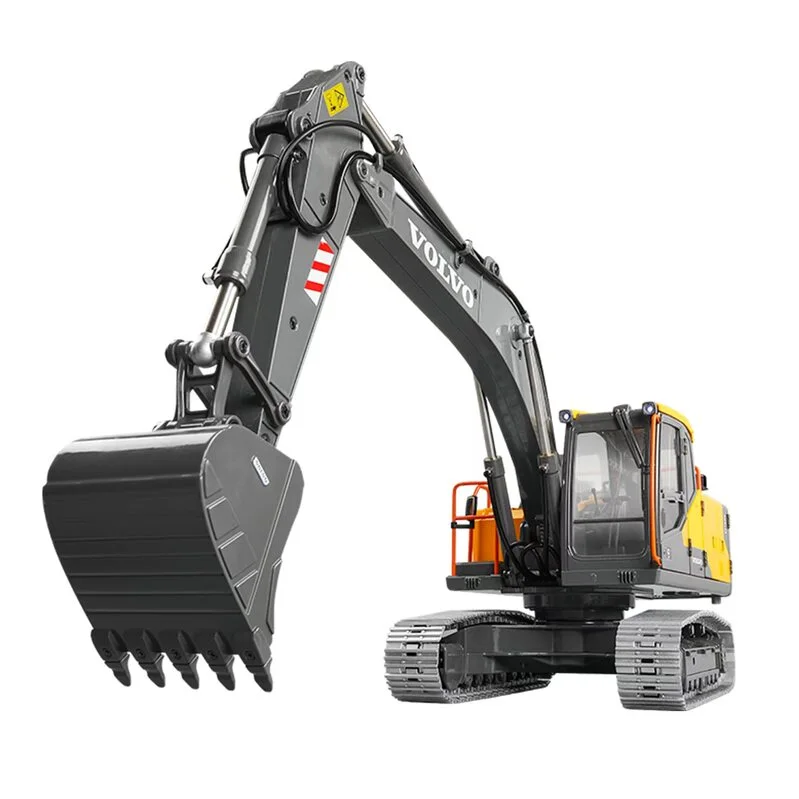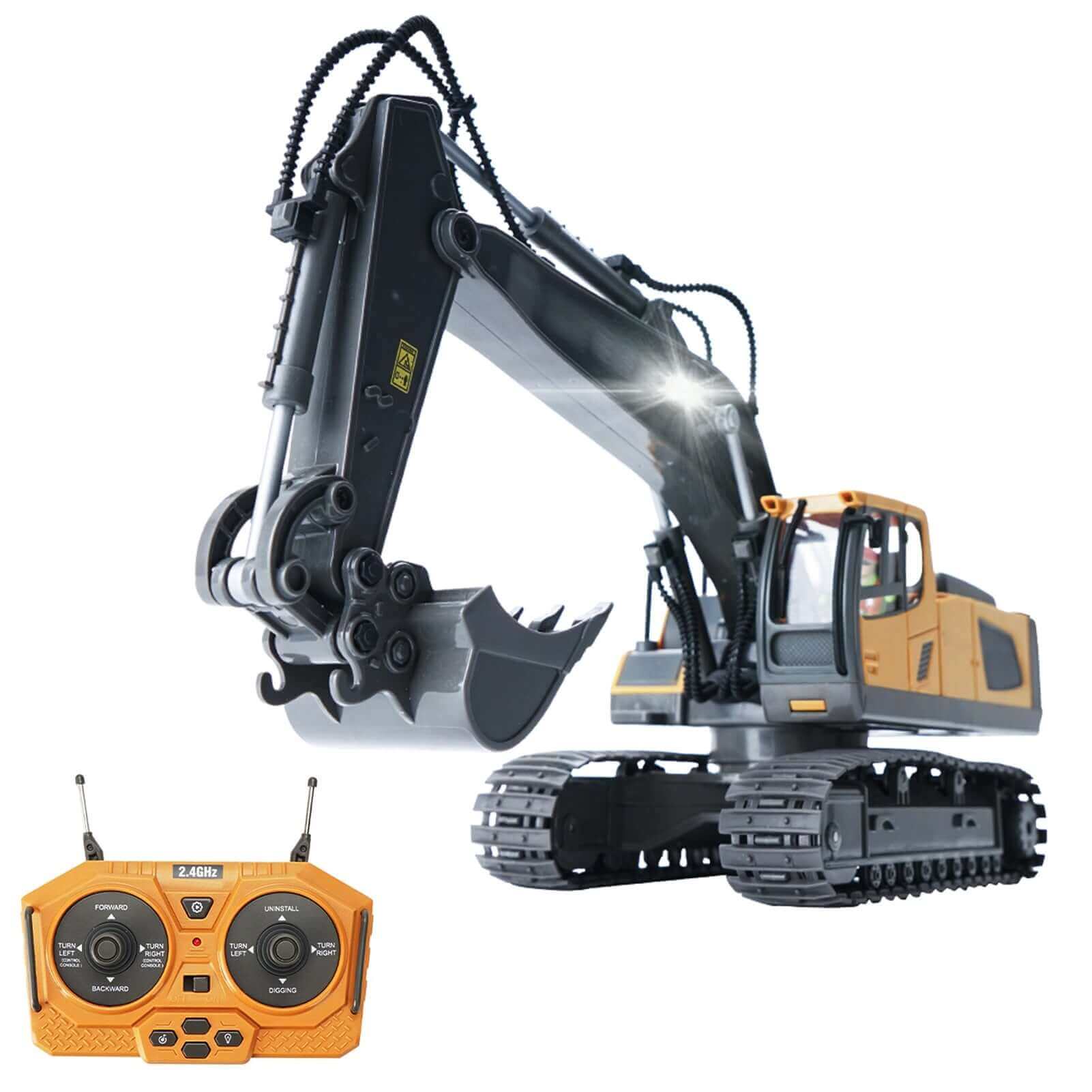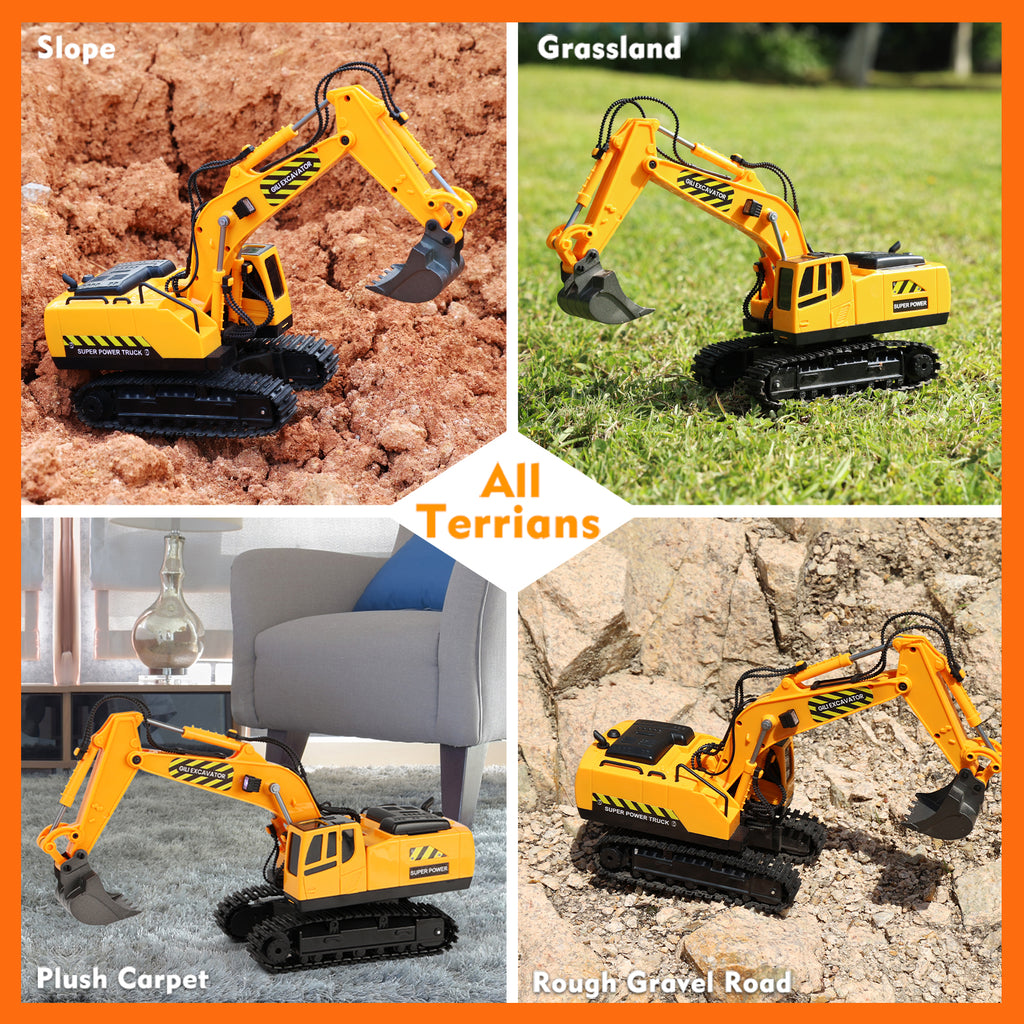The Necessary Functions of Excavator That Make It a Must-Have Tool
Excavators are indispensable in the building and landscape design markets. Their versatile attachments permit for a series of jobs, from excavating to demolition. Furthermore, they boast premium excavating depth and reach, powered by durable engines. Operator convenience and small styles improve use in different settings. What really sets excavators apart are their advanced hydraulic systems and longevity. Recognizing these functions can clear up why they are considered important devices on any job website.
Functional Add-ons for Improved Performance
Although excavators are powerful machines on their very own, the enhancement of versatile accessories significantly boosts their capability. These add-ons transform a common excavator into a multi-purpose tool, suitable for a range of tasks. Buckets, for instance, can be found in various forms and sizes, enabling operators to dig, scoop, and relocate products efficiently. Hydraulic thumbs can be added for enhanced gripping and handling of bulky things, such as logs or rocks.Furthermore, specialized accessories like breakers and augers enable drilling and demolition job, increasing the excavator's utility on construction websites. remote control excavator. Grapples are one more option, suitable for sorting and moving particles. This versatility not just raises performance but likewise decreases the demand for multiple devices, conserving time and prices. By furnishing excavators with the ideal add-ons, operators can deal with diverse projects, making them crucial in the building market
Superior Digging Deepness and Reach
Excavators are created with superior digging deepness and reach, allowing them to navigate in limited areas and gain access to hard-to-reach locations. This ability is essential for numerous building and construction and excavation jobs, where conventional equipment might fail. With adjustable boom arms and extendable tracks, excavators can conveniently navigate unequal surface while maintaining stability.The excavating deepness can vary substantially among designs, often varying from 10 to 25 feet, depending on the design and purpose. This feature enables drivers to dig deep into structures, trenches, and other deep structures successfully. Additionally, the reach of an excavator permits for specific digging and product handling without rearranging the maker regularly, conserving time and labor costs.Ultimately, the premium digging depth and reach of excavators make them vital for specialists looking for to finish complicated jobs with accuracy and effectiveness. Their flexibility enhances performance on job sites, showcasing them as a necessary device in contemporary construction.
Powerful Engine Performance

When it concerns performance and productivity on building and construction sites, powerful engine efficiency plays an essential duty in the capabilities of an excavator. A durable engine creates considerable horsepower, permitting the equipment to take on durable jobs easily - remote control excavator. This strength translates into faster cycle times, allowing operators to full projects extra quickly.Additionally, powerful engines provide the essential torque to handle challenging terrains and varied loads, making sure that the excavator can do effectively under different conditions. Whether it is raising, digging, or moving products, the engine's efficiency directly affects the overall functional performance of the machine.Furthermore, improvements in engine technology have actually resulted in enhanced gas effectiveness, minimizing functional prices while keeping power outcome. Eventually, the engine's efficiency functions as the backbone of an excavator, verifying its standing as an important tool in the construction industry
Advanced Hydraulic Equipments

Enhanced Lifting Capacity
A significant improvement in raising ability can be connected to innovative hydraulic systems discovered in contemporary excavators. These systems utilize high-pressure liquid to produce better pressure, allowing operators to lift much heavier tons with ease. The engineering behind these hydraulics assurances peak performance, offering an impressive power-to-weight ratio that enhances overall effectiveness. Therefore, excavators can tackle demanding jobs, such as lifting huge materials or tools, without compromising security. In addition, the durable layout of hydraulic elements adds to increased sturdiness and dependability, making them suitable for different building and construction settings. This improved training capability not just minimizes the moment required for tasks yet also decreases the demand for additional machinery, showing important for both productivity and cost-effectiveness in the building industry.
Improved Accuracy Control
Although conventional excavators often had problem with accuracy, contemporary hydraulic systems have changed control mechanisms, allowing operators to implement jobs with amazing precision. These sophisticated systems utilize proportional control shutoffs that permit smoother and more receptive movements, significantly reducing the margin for error. Operators can now carefully tune the excavator's activities, making it easier to navigate tight spaces and deal with delicate products. Improved responses systems better notify drivers of real-time performance, making certain excellent sychronisation in between the machine and operator. This boosted precision not only improves effectiveness yet additionally improves security on task websites, lessening the danger of mishaps. As an outcome, modern-day excavators furnished with innovative hydraulic systems are indispensable tools for building and excavation projects needing precise precision.
Driver Comfort and Visibility
Driver convenience and presence are important parts in the layout of modern excavators (remote control excavator). Features such as ergonomic seat design, boosted presence alternatives, and efficient control designs greatly improve the driver's experience and efficiency. Focusing on these facets assurances that operators can function efficiently and safely in numerous conditions
Ergonomic Seat Style
Convenience and visibility are paramount in excavator layout, with the ergonomic seat playing a crucial duty in enhancing the operator's experience. An ergonomic seat is crafted to sustain the driver's body, reducing tiredness during long hours of procedure. Flexible functions, such as seat height, backrest angle, and lumbar assistance, deal with individual choices and advertise suitable posture. These adjustments enhance convenience and allow the operator to maintain concentrate on tasks without pain. Furthermore, a well-designed seat can give better side assistance, enabling for smoother maneuvering when the excavator is in procedure. This thoughtful layout not only boosts efficiency yet additionally adds to general security, making certain that drivers can execute their obligations efficiently and successfully.
Boosted Exposure Functions
The design of an excavator prolongs past simply the seat, with enhanced exposure attributes playing a considerable function in operator comfort and overall safety. Huge windows and tactically positioned mirrors give operators with a clear view of their surroundings, lessening unseen areas. This design consideration enables for better spatial understanding, which is vital in active workplace. Additionally, many excavators integrate rearview video cameras and advanced tracking systems that aid drivers in steering limited spaces. The combination of these exposure includes not just promotes safety but also decreases operator fatigue by making it possible for simpler tracking of work areas. Inevitably, boosted visibility adds to more efficient procedures and assists guarantee that excavators can do their jobs properly and securely.
Control Format Efficiency
While handling facility job websites, an effective control format additional info significantly improves both driver convenience and visibility. A properly designed control setup warranties that operators can access vital functions with very little effort, minimizing fatigue throughout long hours. Ergonomic joystick positionings and instinctive switch arrangements permit smooth procedure, allowing drivers to keep emphasis on the task available. Furthermore, clear exposure of both the workspace and the control panel is crucial for security and precision. Modern excavators usually include flexible seating and control setups to accommodate different driver preferences, even more boosting convenience. Ultimately, an attentively made control design not only enhances performance but likewise fosters a much safer working environment by permitting operators to respond swiftly to altering problems.
Compact Design for Urban Environments
As metropolitan building sites commonly encounter space constraints, a small design ends up being important for excavators operating in these settings. These machines are engineered to navigate limited spaces, permitting efficient maneuverability in jampacked work sites. A minimized impact allows them to function very closely to existing structures, lessening disruption and making the most of productivity.The small layout typically consists of much shorter tracks and a tighter turning radius, helping with procedure in slim alleys and constrained areas. Light-weight materials add to alleviate of transportation, making it less complex to move the excavator from one location to another within the urban landscape.Additionally, several small excavators are furnished with functions such as extendable arms and functional accessories, boosting their capability while maintaining a little dimension. This versatility allows drivers to take on a selection of jobs, from digging to demolition, all while fitting seamlessly into the restraints of urban environments.

Resilience and Maintenance Considerations
Longevity stands as an essential element in the performance and long life of excavators, especially popular metropolitan atmospheres. These devices undergo extensive conditions, consisting of varying dirt types, severe temperature levels, and high-frequency use. High-quality materials and robust building and construction are essential for making sure that excavators can stand up to these difficulties without compromising functionality.Regular upkeep is similarly vital in preserving toughness. Set up assessments, prompt oil adjustments, and the replacement of used elements contribute significantly to an excavator's life expectancy. Operators must additionally take notice of hydraulic systems, tracks, and undercarriages, as these parts typically birth the impact of wear and tear.Investing in long lasting excavators with substantial maintenance strategies enhances dependability and reduces downtime, ultimately resulting in enhanced productivity on building and construction websites. Recognizing the interplay between resilience and maintenance is important for anyone taking into consideration the acquisition of an excavator for metropolitan jobs.
Frequently Asked Concerns
How Do Excavators Contrast to Other Building And Construction Devices?
Excavators attract attention among building and construction devices as a result of their versatility, allowing jobs such as lifting, grading, and digging. Compared to others, their hydraulic capabilities provide greater performance and power, making them indispensable on hop over to these guys various work sites.
What Security Includes Are Consisted Of in Modern Excavators?
Modern excavators include different safety features, including rollover security systems, alarm systems, and progressed exposure improvements. These elements work together to reduce risks, ensuring operator safety while enhancing efficiency on building websites and other requiring atmospheres.

Can Excavators Be Made Use Of in Winter Conditions?
Excavators can without a doubt be used in winter months problems, provided they are outfitted with appropriate wintertime accessories and safety measures are taken. Proper maintenance and adjustments improve their performance, making sure efficient procedure regardless of difficult weather situations.
What Is the Ordinary Life-span of an Excavator?
The typical life expectancy of an excavator commonly varies from 7,000 to 10,000 hours of operation. This duration can greatly rely on upkeep techniques, operating conditions, and the details version's longevity and style features.
Just how Do I Select the Right Excavator Dimension for My Task?
Picking the ideal excavator dimension includes examining project extent, site problems, and material kinds. review Take into consideration aspects like reach, deepness needs, and weight capability to assure maximum efficiency and safety during operation. Dimension matters substantially in task success. Additionally, the reach of an excavator permits for accurate excavating and material handling without repositioning the equipment frequently, conserving time and labor costs.Ultimately, the remarkable digging depth and reach of excavators make them important for experts seeking to finish complicated jobs with precision and efficiency. Convenience and exposure are critical in excavator design, with the ergonomic seat playing an essential function in boosting the operator's experience. The layout of an excavator extends beyond simply the seat, with improved exposure attributes playing a significant function in driver comfort and general safety and security. Modern excavators frequently integrate flexible seating and control settings to suit various driver preferences, further enhancing comfort. Light-weight materials contribute to ease of transport, making it simpler to move the excavator from one place to one more within the metropolitan landscape.Additionally, lots of portable excavators are geared up with functions such as extendable arms and functional add-ons, improving their capability while keeping a tiny size.